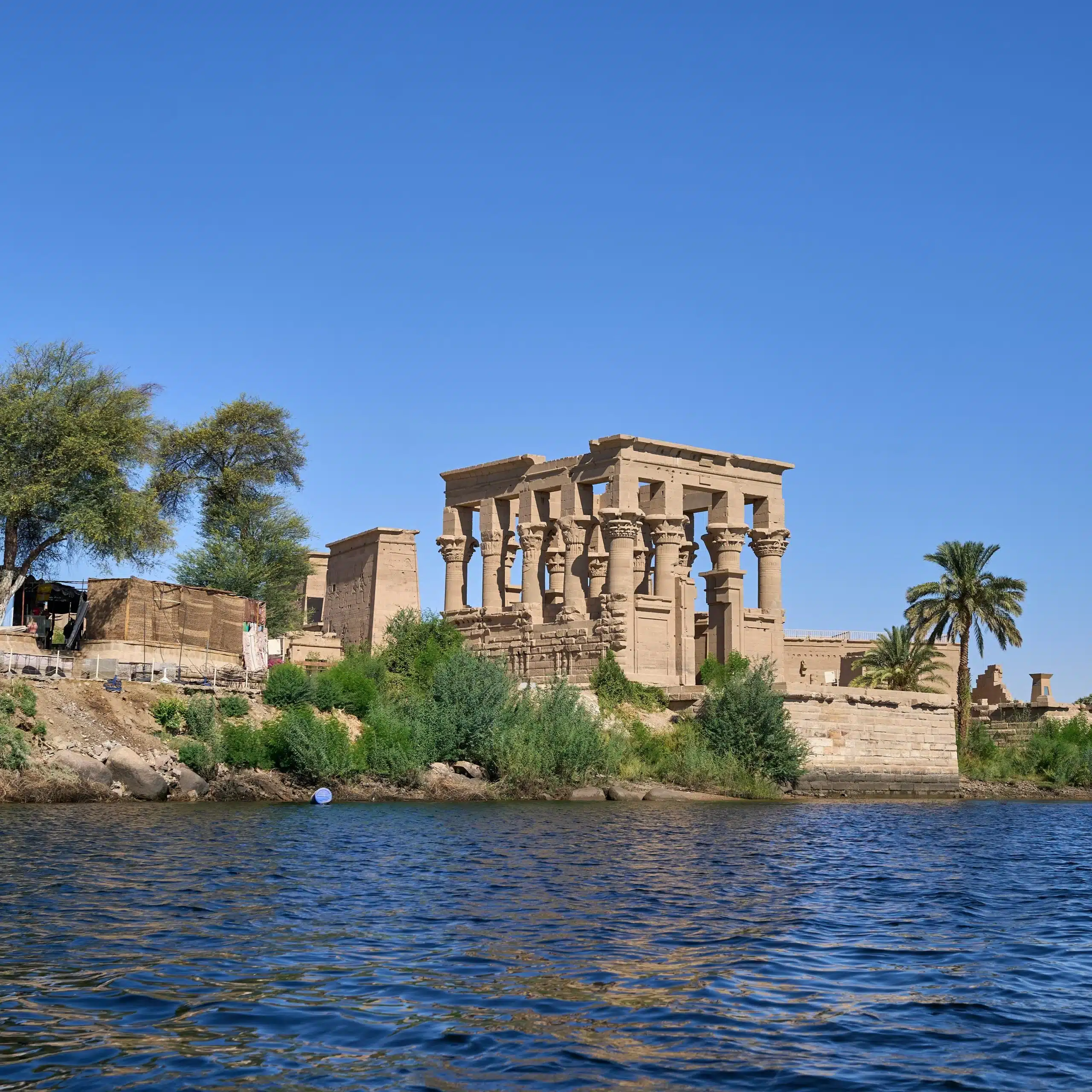Among the many remarkable temples of Egypt, few sites are as enchanting and unique as the Temple of Philae. Resting on Agilkia Island near Aswan, the Temple of Philae is not only a marvel of ancient architecture but also a sacred sanctuary dedicated to the goddess Isis. Known as one of the last places where the ancient Egyptian religion was practiced, the Temple of Philae remains a stunning symbol of devotion, beauty, and resilience.
In this article, we’ll explore the history, design, relocation, and lasting significance of the Temple of Philae, and why it is a must-visit for anyone traveling to Egypt.
History of the Temple of Philae
The Temple of Philae was constructed during the Ptolemaic period, around the 3rd century BCE, though earlier shrines to Isis existed on the island. It served as one of the main centers for the worship of Isis, who was revered as the goddess of magic, motherhood, and protection.
Even after the arrival of Christianity in Egypt, the Temple of Philae continued to be an active place of worship until the 6th century CE, making it one of the last bastions of the ancient Egyptian religion.
The temple was not just a religious site but also a cultural crossroads, blending Egyptian, Greek, and Roman architectural elements that can still be seen in its columns and reliefs.
Architecture and Design of the Temple of Philae
The Temple of Philae is renowned for its elegant and harmonious design. Built from sandstone, the complex is laid out with a grand pylon entrance leading into courtyards, hypostyle halls, and sanctuaries.
Key highlights include:
- First Pylon: Towering gateways adorned with reliefs of Ptolemaic kings making offerings to the gods.
- Forecourt: A large open space surrounded by colonnades with beautifully carved capitals.
- Temple of Isis: The heart of the complex, where rituals were performed to honor the goddess.
- Kiosk of Trajan: A smaller but iconic structure with open columns, often called “Pharaoh’s Bed.”
The proportions, symmetry, and delicate carvings of the Temple of Philae make it one of the most graceful temples in Egypt.
The Relocation of the Temple of Philae
One of the most extraordinary chapters in the story of the Temple of Philae is its relocation. In the 1960s, with the construction of the Aswan High Dam, the original island of Philae was at risk of being permanently submerged by the rising waters of Lake Nasser.
In a massive international effort led by UNESCO, the Temple of Philae was carefully dismantled, stone by stone, and moved to nearby Agilkia Island. This engineering feat ensured the preservation of one of Egypt’s most treasured monuments. Today, visitors can experience the Temple of Philae as it once stood, surrounded by the waters of the Nile.
Reliefs and Symbolism in the Temple of Philae
The walls of the Temple of Philae are covered with intricate reliefs depicting religious rituals, offerings, and myths associated with Isis, Osiris, and Horus. One famous scene shows Isis giving birth to Horus, emphasizing her role as the mother goddess.
Other carvings depict Roman emperors in pharaonic garb, paying homage to Egyptian gods, symbolizing the temple’s role as a bridge between cultures.
The Temple of Philae was also closely tied to the myth of Osiris, as it was believed to be one of the burial sites of the god’s body parts. This connection gave the temple deep symbolic and spiritual importance.
Visiting the Temple of Philae Today
A visit to the Temple of Philae is a journey like no other. The approach itself is magical—you must take a small boat across the Nile to reach Agilkia Island, offering breathtaking views of the temple rising above the water.
- Best Time to Visit: Early morning or late afternoon for cooler temperatures and stunning light.
- Tickets: Entry tickets can be purchased at the dock, with additional fees for the boat ride.
- Sound and Light Show: At night, the temple comes alive with lights and narration, telling the story of Isis and Osiris.
Exploring the Temple of Philae is possible with:
Final Thoughts: Why the Temple of Philae is a Must-See
The Temple of Philae is more than just an ancient monument—it is a story of devotion, survival, and timeless beauty. Its location on the Nile, elegant architecture, and spiritual symbolism make it one of Egypt’s most unforgettable sites.
For travelers seeking a blend of history, mythology, and breathtaking scenery, the Temple of Philae is a destination that should not be missed.
Plan your visit today with www.deltatoursegypt.com and let the magic of the Temple of Philae transport you back to the age of gods and pharaohs.


Comment (0)